Products You May Like
Ever wonder if high-end gear is worth the high-end price? Us too. After all, you can head to big-box stores and pick up a tent for less than $50, and a headlamp for 10 bucks. I wondered: If I outfitted myself with low-cost Walmart gear and went camping with a buddy who uses only name-brand equipment, would his gear outperform mine? Or would there be times when the cheaper gear worked just as well? With that in mind, we set off on a 5-mile, two-night backpacking trip into the Book Cliffs outside Grand Junction, Colorado, to find out. The weather was classic shoulder season, with lots of spring wind and nightly temperatures in the high 30s, and the terrain was dry and rocky, dominated by boulders and junipers.
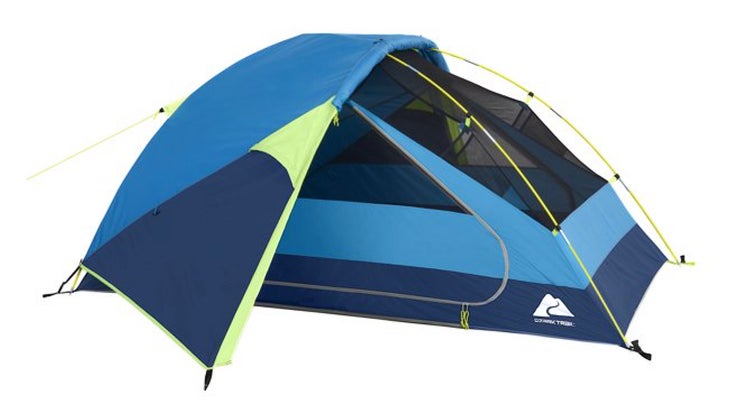
Tent
Ozark Trail 2-Person Backpacking Tent ($49) versus MSR Freelite 2 ($410)
Tale of the tape: A good backpacking tent must be light and packable, but strong enough to withstand backcountry weather. The Ozark Trail offers an attractive price-to-space ratio with nearly 34 square feet of interior space, two 10-square-foot vestibules, and a peak height of 42 inches—all above average for its category and roomier than my buddy’s high-end, MSR two-person tent (29-square-foot interior, 39-inch peak height, two 7.5-square-foot vestibules). Weight (7 lbs. 9 oz.) and pack-down size (21 inches long and 8 inches wide) were another story, however; the Freelite weighs just 2 lbs. 5 oz. and registers about half the size when packed down.
Performance: The double-walled, freestanding Ozark Trail performed just as well as the Freelite, although it wasn’t as easy to transport and set up. It uses three separate poles in its pitch instead of the hubbed poles used by most top-end tents. The difference was on full display as we made camp; my buddy easily erected his tent while I struggled to set up mine in 15-mph winds. However, it was hard to find a significant difference otherwise. The Ozark has a strong pitch thanks to its heavy fiberglass poles, four pre-attached guy lines, recycled poly taffeta construction, and Velcro straps that secure the fly to the poles. It even has two pop-out vents on the fly to help with ventilation.
Verdict: Not a bad buy for short trips. The Ozark Trail isn’t as easy to set up or carry as top-end tents, and won’t last as many years due to its hardware (plastic fly clips and zippers that are easy to bend), but it is super spacious, provides adequate weather protection, and is significantly less expensive.
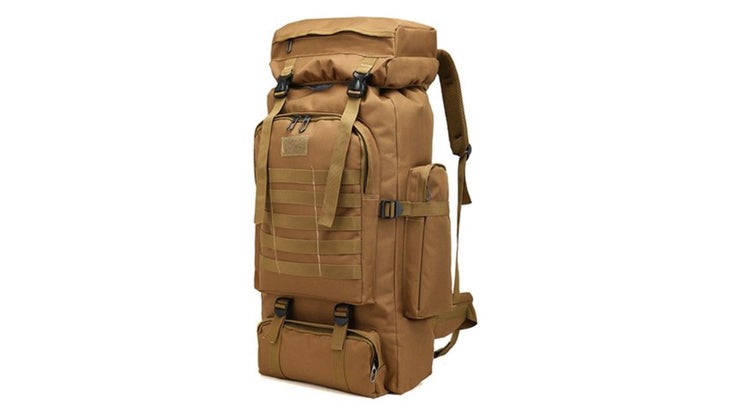
Backpack
Bakeey 80L Outdoor Backpack ($47) vs. Gregory Katmai 65L ($300)
Tale of the tape: Backpacks are the lynchpin of any hiking trip. They need to be durable yet lightweight, and big enough to swallow gear yet small enough to comfortably carry. On paper, the Bakeey looks great—15 more liters of space than the Katmai for about a sixth of the price. A closer look made me hesitate: There’s no internal frame for structure, it lacks padding on the shoulder straps and hipbelt, and the top lid is barely big enough to hold a rain jacket. The two side and one front pocket are much smaller than those on the Katmai, and there’s no access to the inside through the bottom sleeping bag/dirty laundry pocket, making the Bakeey a one-way-in, one-way-out pack. Weights are similar, about 5 pounds each, but the Bakeey is made from Oxford fabric while the Katmai is 100 percent nylon.
Performance: Carrying this backpack was torture. My buddy loaded the Katmai to the gills, and it wore comfortably thanks to the strong internal frame. The Bakeey, however, became bloated, misshaped, and almost unusable when full; it bulged out the back and fit awkwardly. The pockets are small and don’t close when full (cheap zippers), and durability is a huge concern: The ends of the straps frayed after two days.
Verdict: Filling the Bakeey with bulky equipment didn’t help, but there was no comparing the two packs. I would not trust this pack deep in the backcountry, nor would I carry it again anywhere.
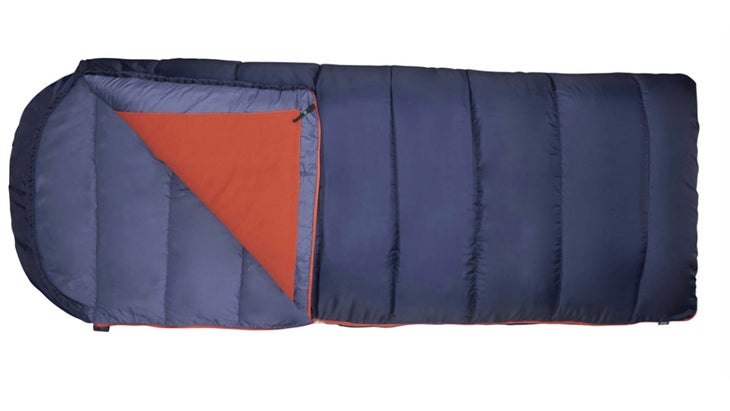
Sleeping Bag
Slumberjack 30°F Shadow Mountain Hooded Sleeping Bag ($50) vs. Therma-a-Rest Saros 32°F ($180)
Tale of the tape: Weighing a whopping 6 pounds, the Slumberjack is at least three times the size of my buddy’s sleeping bag when packed down, and I barely get it through the opening of my pack. This set the tone for a stressful game of Tetris and forced me to strap gear, such as my camp chair, to the outside of the pack. When bedtime came and I got into it for the first time, things got even worse.
Performance: Brrr. The Slumberjack comes with a removable fleece liner that kept me alive on a low-40s night; the extra insulating layer was the only thing preventing total misery. The bag’s roomy rectangular design (35 by 88 inches) trapped cold air in its empty spaces, and the wide-mouth opening does not have a hood, meaning heat escaped and cold air came in when I rolled over.. Meanwhile, the sleek shape, narrow neck, and hooded design of the Saros kept my buddy toasty—I could hear him snoring most of the night.
Verdict: Don’t even think about it. The Slumberjack is unfit for a backpacking trip in every way, and even car campers should be wary due to its inability to hold in heat. Spend the money on a better bag.
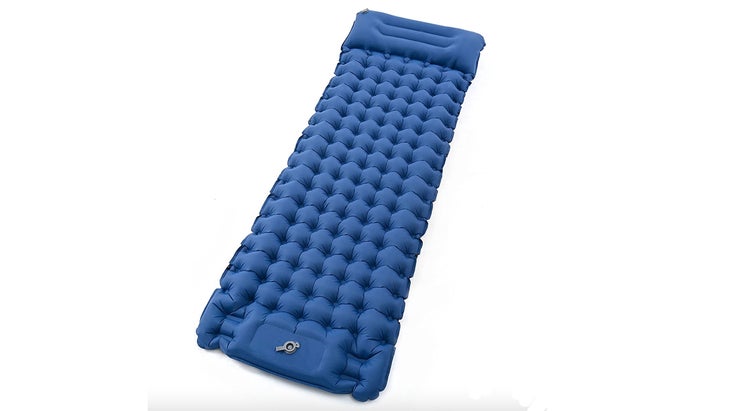
Sleeping Pad
Sugift Sleeping Pad ($31) vs. UST Freestyle ($109)
Tale of the tape: Sleeping pads are one of the most overlooked contributors to comfort in the backcountry, offering insulation from the cold, hard ground. The Freestyle is about an inch thicker (3.5 inches versus 2.4 inches) and a half pound lighter than the Sugift, which weighs 1 lb. 7 oz. Both pack down to the size of a 1-liter Nalgene, and neither are insulated for winter conditions—the Freestyle has an R-value of 2, and the Sugift doesn’t list one, so I assume the worst (1 or 2). The Freestyle inflates in about a minute using a sack pump, while the Sugift has a built-in foot pump of similar efficiency.
Performance: I awoke pleasantly surprised with the Sugift. I was highly skeptical of a sleeping pad with a built-in foot pump, as it seems very detached from backcountry reality (I can’t stand up in my tent, am not going to lay it down in the dirt and stomp on it with my boot, etc). But it worked great when treated like a hand pump, inflating fully with about twenty CPR compressions. The headrest is thick and useful as a built-in pillow, and it was comfortable to lay on, even atop rocks. One of my favorite attributes was that the pad has a snap system that keeps it aligned as you roll it up, so that it fits easily back into the stuff sack, no wrestling needed. That said, I could tell that the high-30s/low 40s temperatures were the lowest it could handle—it was doing the sleeping bag no favors and definitely contributed to my chilly night.
Verdict: Give it a try. If you’re looking to cut costs on short, fair-weather trips in summer, a sleeping pad like the Sugift can suffice. It seems reasonably durable, and it wouldn’t take too many trips to get your money’s worth.
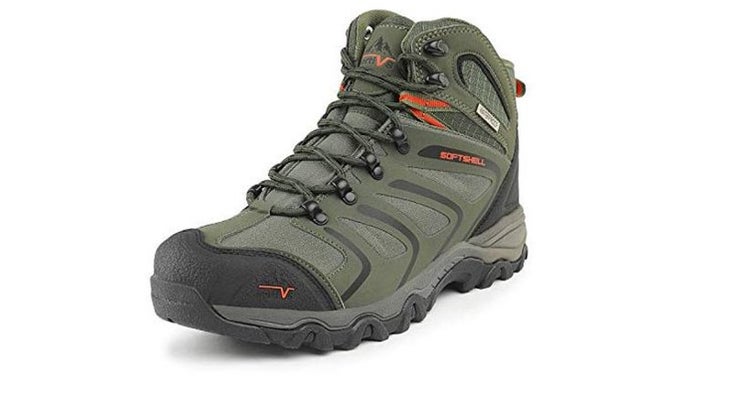
Boots
Nortiv 8 Mens Hiking Boots ($50) vs. Oboz Sawtooth X Mid ($150)
Tale of the tape: Footwear is incredibly important on the trail. If your feet get tired or uncomfortable, your entire body will follow. So while it’s appealing that the Nortiv cost a third of the price, I waswary due to the fact it’s made of mostly synthetic leather while the Oboz is made of oiled nubuck. Pushing on the steel toe, you feel some give in the Nortiv, whereas the Oboz doesn’t budge. Lace loops on the Nortiv are hard-plastic, but metal on the Oboz. Both soles seem equally “grippy,” are water-resistant, and of the same bulk.
Performance: In the beginning, the Nortiv performed well. The sole was comfortable, the grip excellent over rocks and boulders, and they felt noticeably lighter than the Oboz (22 and 28 oz per boot, respectively). But over time, durability and support trended in favor of the Oboz: Its fit and design matches the shape of your foot, whereas the Nortiv is a wider, less-defined last, amd my foot moved around and formed hot spots. The weight of my pack exacerbated this, and going downhill was unpleasant due to al the foot movement. Breathability was also an issue because the Nortiv only has mesh on the upper ankle, resulting in sweaty toes and feet. At the end of the hike, I was happy to take them off.
Verdict: Spend the extra cash. There’s no body part worth investing in more than your feet. Skimping may work in the short term, but will cause blisters and foot issues down the road.
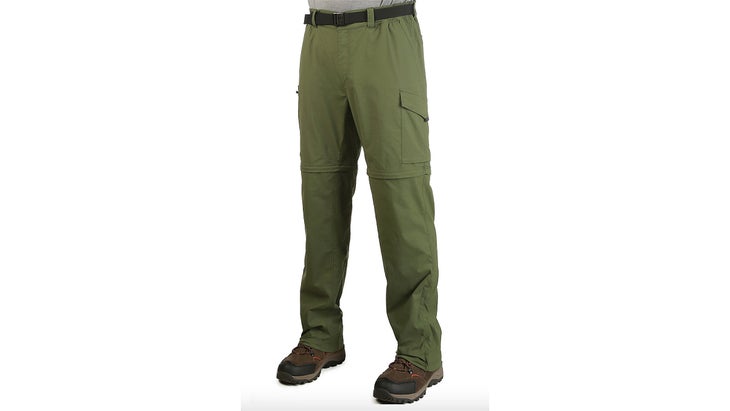
Hiking Pants
Allforth Convertible Pants ($35) vs. Sahara Convertible Pants ($80)
Tale of the tape: Backcountry clothing must be light, durable, comfortable, and, perhaps most importantly, dry quickly. To that end, both pants are made of a quick-dry nylon blend, have cargo pockets, and are designed to convert into shorts by zipping off the lower pant legs. The Sahara has color-coded thigh zippers to help determine right from left when reattaching; the Allforth has no coding.
Performance: I’ve worn more comfortable pants. Even though both are nylon blends, you can definitely feel a difference in the material quality—the Sahara smooth and soft, the Allforth rough and crinkly. Otherwise, these versatile, quick-drying pants perform as expected, drying in a matter of minutes, wicking away sweat, and providing lots of pocket storage for personal items. They were easy to walk in and allowed for full knee bends with no resistance when stepping up boulders. The Allforth’s brushed aside juniper branches without any signs of tearing, and showed no signs of a short life or durability concerns.
Verdict: Toss up. If you prioritize comfort over price, upgrade to something nicer. Otherwise, the Allforths will do the trick and should last you a season or two.
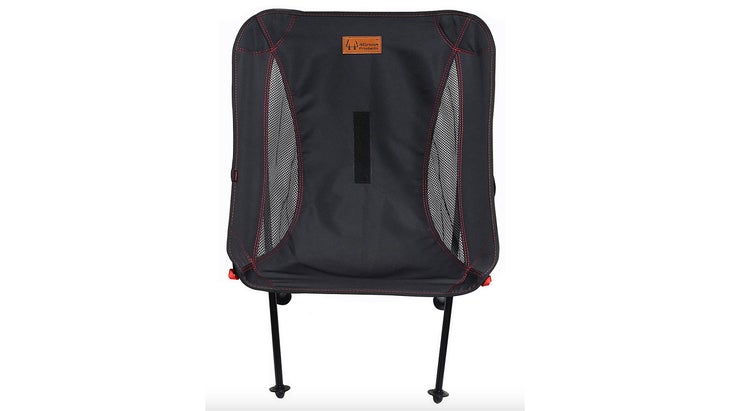
Camp Chair
4Green Ultralight Backpacking Chair ($43) vs. REI Flexlite Air Chair ($100)
Tale of the tape: Backcountry chairs are a luxury item by definition, but one that’s light, packable, and supportive can make a campfire that much more comfortable. The 4Green (2 lbs. 10 oz.) is more than double the weight of the Flexlite (1 lb.), although they are both reasonably light and take up the same amount of space—16 inches in length and 5 inches wide. The 4Green can support 300 pounds of weight; the Flexlite 250.
Performance: Other than a few extra pounds, there’s nothing to fear about the 4Green chair. It’s just as easy to assemble as the REI chair, reasonably light, packs down small, and is really sturdy thanks to its aero-grade aluminum alloy frame. The seat height (15 inches) is noticeably higher than the Flexlite (11 inches), making it easier to get into and out of, and it even comes with a detachable back pillow and a side pocket for personal items.
Verdict: Weight aside, there was no drawback to the 4Green. If an extra pound or two is no biggie, save the cash.
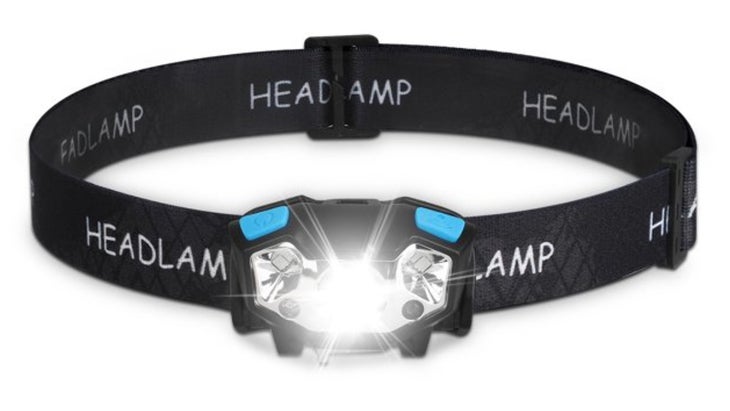
Headlamp
EEEkit LED 5000 Lumens Headlamp ($15) vs. BioLite Headlamp 750 ($100)
Tale of the tape: Headlamps advertise all kinds of fancy numbers, but at the end of the day, they need to do two simple things: provide enough illumination for you to see in total darkness, and have enough battery efficiency to last the length of your trip. The BioLite has more than double the battery capacity of the EEEkit (3000 versus 1200 milliamp hours). Both are rechargeable via USB and offer several different light modes, including red light. The EEEKit is just a tenth of the price, however, and is much lighter—the Biolite has a bulky battery pack on the back, which makes it heavier on the head.
Performance: Don’t be fooled by the number of lumens (5000 for the EEEKit, 750 for the BioLite); this test proved beyond doubt that a lower number of lumens can produce a brighter, more useful light. Despite having 4,250 less lumens, the BioLite proved the more effective headlamp, shining brighter and farther in all scenarios. The EEEkit worked fine around camp, but doesn’t have the distance for wayfinding. It was like comparing sunlight to moonlight in the way they lit up the night. The BioLite could illuminate things clearly 50 yards away, while the EEEkit would have trouble reaching it at all. The EEEkit also skimps on practical necessities, like a locking feature to prevent it from turning on in your bag accidentally—a feature I find imperative for backcountry travel.
Verdict: Invest in a good light. The EEEKit will suffice on the occasional backpack around camp, but most of its bells and whistles are superfluous (like motion-activated mode), its bulb housing feels cheap and easily breakable, and it is not cut out for long-distance wayfinding.
Top Takeaways
Trying to slash your budget? Consider these factors when deciding where to cut costs.
- Durability versus usage. While many of the cheaper products worked well in the short term, the issue of durability is a huge question in the long run. Consider your projected usage. Occasional backpackers can get by with, say, a cheaper tent, while someone camping every weekend may want to upgrade.
- How much is weight worth to you? Many items, like tents, sleeping bags, and camp chairs can be had at a discount if you’re willing to carry extra weight. Consider how far you’ll be hiking and how much you can carry
- Some skimps require splurges later. For example, if you are going to save money by buying a heavy, bulky sleeping bag and tent, you’ll need to splurge on a big, high-quality backpack to lug it all around comfortably.
- Know the return policies. People love REI for their favorable return policies, but remember, you can return stuff to Walmart, too. Give budget gear a try on short, low-risk trips first to see how it performs.
